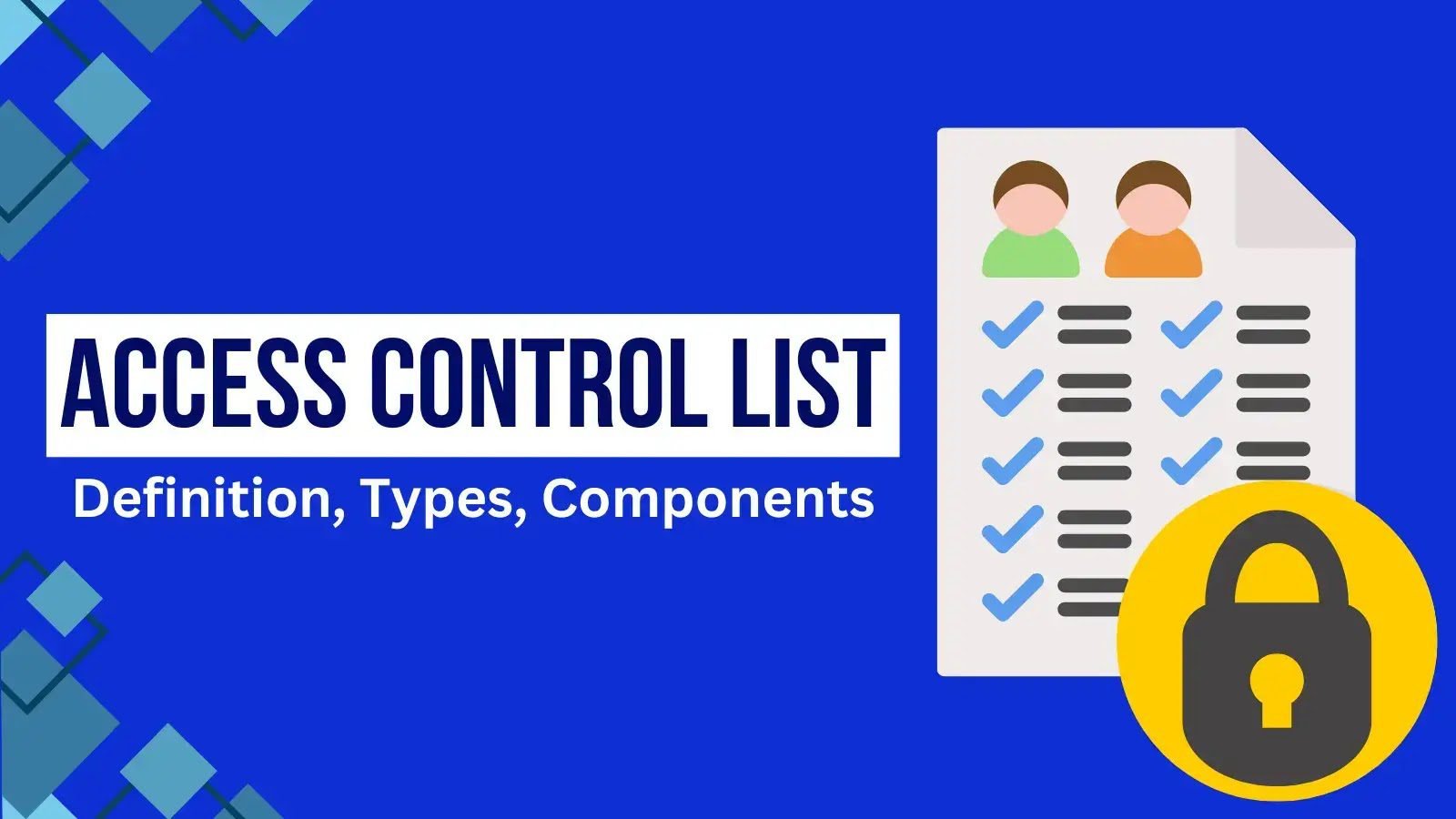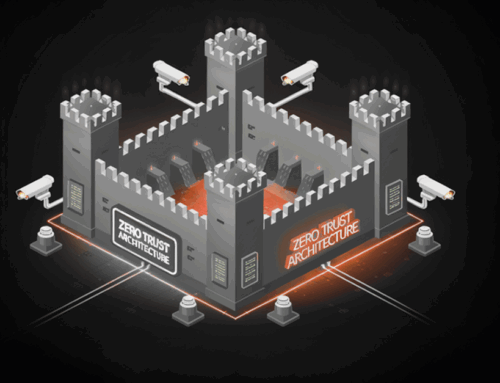
What is an Access Control Lists (ACLs)? – A Comprehensive Guide
What is an Access Control Lists (ACLs)?
Access Control Lists (ACLs) are fundamental to network security and management. They are critical in determining who or what can access specific resources within a network.
This article delves into the intricacies of ACLs, exploring their types, components, applications, and best practices for implementation. We will also compare ACLs across operating systems and discuss their strategic placement within network architectures.
What is an Access Control List?
An Access Control List (ACL) is a set of rules to permit or deny access to specific digital areas. There are two primary types of ACLs:
- Filesystem ACLs
- Networking ACLs
Filesystem ACLs determine who can access files or folders, informing the operating system about which users have access and what actions they are allowed to perform.

On the other hand, Networking ACLs control access to the network by instructing routers and switches on what types of traffic are permitted and what activities are allowed.
Initially, ACLs were the sole method for implementing firewall protection. Today, there are many different types of firewalls and alternative solutions available. Despite this, organizations continue to use ACLs with technologies like Virtual Private Networks (VPNs).
This integration helps specify which traffic should be encrypted and routed through a VPN tunnel, enhancing security measures beyond the capabilities of ACLs alone.
Components of an ACL
An ACL is composed of several key elements:
- Sequence Number: A unique identifier for each ACL entry.
- ACL Name: An alternative to sequence numbers, allowing for easier identification.
- Remark: Comments or descriptions that provide context for each entry.
- Network Protocol: Specifies which protocols (e.g., IP, TCP, UDP) are affected by the ACL.
- Log: Enables logging to track network traffic and ACL activity.
- Statement: Defines whether traffic is permitted or denied.
- Source or Destination: Identifies the IP addresses involved in the traffic.
Types of Access Control Lists
ACLs come in various forms, each suited for different scenarios and offering varying levels of control and complexity. Here is a table comparing different types of Access Control Lists (ACLs):
| Type of ACL | Description |
| Standard ACL | Standard lists are the most common type of ACLs used for simple deployments. They filter only the source address of the data packet and are less processor-intensive. |
| Extended ACL | Extended lists are complex and resource-intensive but offer granular control. They allow filtering based on source and destination IP addresses, source and destination ports, protocol types (ICMP, TCP, IP, UDP), and more. |
| Dynamic ACL | Also known as Lock and Key, dynamic ACLs use specific attributes and timeframes. They depend on extended ACLs, authentication, and Telnet for functionality. |
| Reflexive ACL | Known as IP session ACLs, reflexive ACLs filter IP traffic based on upper-layer session information. They permit IP traffic generated within your network and deny traffic from external or unknown networks. |
| Time-based ACL | Similar to extended ACLs, time-based ACLs can be implemented with specific times of the day and week, allowing for time-specific access control. |
Applications of ACLs
ACLs are integral to network security and efficiency. They help prevent unauthorized access, manage bandwidth, and block malicious traffic. Here are some key applications:
- Preventing Data Breaches: By controlling access to sensitive information, ACLs help protect against data breaches.
- Managing Network Bandwidth: ACLs can prioritize essential services over less critical ones, ensuring optimal resource allocation.
- Blocking Malicious Traffic: ACLs enhance network security by filtering out harmful traffic.
How ACLs Work
A filesystem Access Control List (ACL) is a table that informs an operating system about the user’s access privileges to a system object, such as a file or directory.
Each object is associated with a security property that links it to its ACL, which includes an entry for every user with access rights to that object.
Typical privileges include reading, executing, or writing to a file or directory. Operating systems that use ACLs include Microsoft Windows NT/2000, Novell’s Netware, Digital’s OpenVMS, and UNIX-based systems.
When a user requests access to an object, the operating system checks the ACL for a relevant entry to determine if the requested operation is allowed.
In networking, ACLs are implemented in routers or switches to act as traffic filters. These networking ACLs contain predefined rules that dictate which packets or routing updates are allowed or denied access to a network.
Routers and switches with ACLs function like packet filters, transferring or denying packets based on specific criteria.
As Layer 3 devices, packet-filtering routers use rules to decide whether to permit or deny traffic based on source and destination IP addresses, destination and source ports and the packet protocol.
Best Practices for Implementing ACLs
Implementing ACLs effectively requires careful planning and adherence to best practices:
1. Apply ACLs Consistently
Ensure that ACLs are applied to all relevant interfaces. This consistency is crucial for maintaining network security and preventing unauthorized access.
2. Order Matters
Place the most frequently triggered rules at the top of the ACL to optimize performance. This approach minimizes the time packets spend being evaluated against the rules.
3. Document Everything
Maintain thorough documentation of ACL rules, including their purpose and implementation date. This practice aids in future audits and troubleshooting.
4. Regularly Review and Update
ACLs should be reviewed and updated regularly to adapt to changing network conditions and security threats.
Linux ACL vs. Windows ACL
ACLs function differently across operating systems. In Linux, ACLs offer flexibility through kernel modifications, which require specialized expertise.
Windows, on the other hand, provides a stable platform with easier application integration but less flexibility. Each system has advantages and trade-offs, depending on an organization’s specific needs.
The placement of ACLs within a network is crucial for maximizing their effectiveness. They are often positioned on edge routers, which serve as gateways between the public internet and the internal network.
This strategic placement allows ACLs to filter traffic before it reaches sensitive areas of the network.
Implementing ACLs
To effectively implement an Access Control List (ACL), network administrators must understand the types of traffic that flow into and out of the network and the resources they aim to protect.
Administrators should organize IT assets into categories and assign different user privileges accordingly.

Access control is a crucial aspect of network security. Typically, a standard ACL is implemented close to the destination it aims to protect, while extended ACLs are placed near the source.
Extended ACLs can be configured using either access list names or numbers. The primary example syntax for creating a standard numbered ACL on a Cisco router is:
Router(config)# access-list (1300-1999) (permit | deny) source-addr (source-wildcard)Here’s what each part means:
- (1300-1999): Specifies the ACL IP number range, naming the ACL and defining it as a standard ACL.
- (permit | deny): Indicates whether to allow or reject the packet.
- Source-addr: Specifies the source IP address.
- Source-wildcard: This defines the wildcard mask, which tells the router which bits of an IP address can be examined to determine whether they match the access list.
Users can input this configuration into the command line to create an ACL. Additionally, cloud platforms from vendors like Oracle and IBM typically provide options to develop ACLs through their user login portals.
Access Control Lists (ACLs) are vital network management and security tools. They offer granular control over who or what can access specific resources.
Understanding the different types of ACLs, their components, and best practices for implementation can help organizations enhance their security posture and optimize network performance. As cybersecurity threats continue to evolve, the role of ACLs in protecting network integrity remains indispensable.





